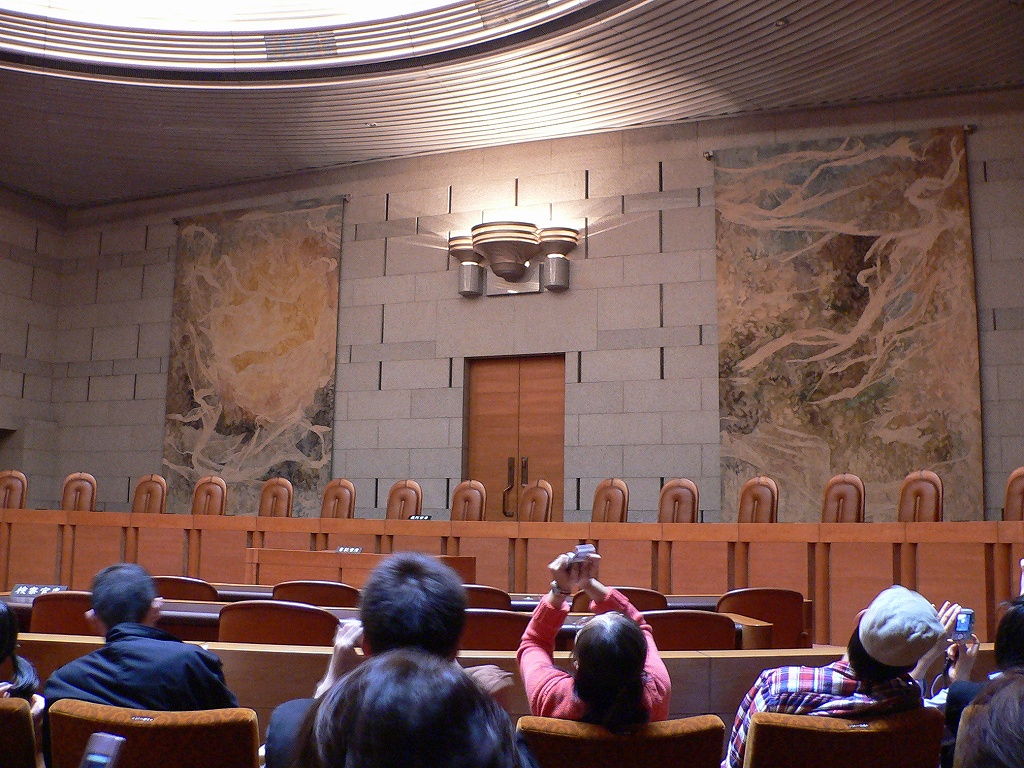|
Legal Research And Training Institute
The Legal Research and Training Institute (司法研修所 ''Shihō-kenshū-jo'') is operated by the Supreme Court of Japan for the purposes of judicial research and training of new attorneys, prosecutors and judges. It is located in the city of Wako, Saitama, northwest of Tokyo. Overview LRTI is an ancillary organization of the Supreme Court and consists of two divisions: a First Division that conducts research, and a Second Division that conducts training of new attorneys, prosecutors and judges. LRTI's facility in Wako includes three main buildings and two dormitory buildings for judges and trainees respectively. All prospective attorneys, prosecutors and judges in Japan are required to undergo paid full-time training at LRTI (司法修習 ''shihō-shūshū'') after passing the bar examination A bar examination is an examination administered by the bar association of a jurisdiction that a lawyer must pass in order to be admitted to the bar of that jurisdiction. Austral ... [...More Info...] [...Related Items...] OR: [Wikipedia] [Google] [Baidu] |
Japan
Japan ( ja, 日本, or , and formally , ''Nihonkoku'') is an island country in East Asia. It is situated in the northwest Pacific Ocean, and is bordered on the west by the Sea of Japan, while extending from the Sea of Okhotsk in the north toward the East China Sea, Philippine Sea, and Taiwan in the south. Japan is a part of the Ring of Fire, and spans an archipelago of 6852 islands covering ; the five main islands are Hokkaido, Honshu (the "mainland"), Shikoku, Kyushu, and Okinawa. Tokyo is the nation's capital and largest city, followed by Yokohama, Osaka, Nagoya, Sapporo, Fukuoka, Kobe, and Kyoto. Japan is the eleventh most populous country in the world, as well as one of the most densely populated and urbanized. About three-fourths of the country's terrain is mountainous, concentrating its population of 123.2 million on narrow coastal plains. Japan is divided into 47 administrative prefectures and eight traditional regions. The Greater Tokyo Ar ... [...More Info...] [...Related Items...] OR: [Wikipedia] [Google] [Baidu] |
Supreme Court Of Japan
The , located in Hayabusachō, Chiyoda, Tokyo, is the highest court in Japan. It has ultimate judicial authority to interpret the Japanese constitution and decide questions of national law. It has the power of judicial review, which allows it to determine the constitutionality of any law or official act. History The modern Supreme Court was established in Article 81 of the Constitution of Japan in 1947. There was some debate among the members of the SCAP legal officers who drafted the constitution and in the Imperial Diet meeting of 1946 over the extent of the power of the judiciary, but it was overshadowed by other major questions about popular sovereignty, the role of the emperor, and the renunciation of war. Although the ratified wording in Article 81 states that court possesses the power of judicial review, a part of the court's early history involved clarifying the extent of this power. In 1948, the court declared that the constitution meant to establish the type of ju ... [...More Info...] [...Related Items...] OR: [Wikipedia] [Google] [Baidu] |
Attorneys In Japan
In Japan, form the base of the country's legal community. History Pre-Meiji restoration Historically, Japanese customs instituted an avoidance of legal involvement, based upon Confucian doctrines, and Japanese principles of harmony; anyone brought before a court for a criminal or civil matter suffered public and private humiliation, since they disrupted harmony. Nevertheless, by the 18th century, innkeepers in Edo began offering simple legal services for guests. They were known as ''Kujishi''. By the 19th century, references began to appear in Japanese literature on the role of "European-style" lawyers. Officially recognized legal representatives in civil trials, known as ''daigennin'', began to appear by the mid-19th century. No legal training was required to be a ''daigennin''. Meiji restoration Regulation of legal professionals began during the Meiji Restoration. In 1890, the Criminal Code was amended, which recognized the right to legal representation during a criminal tri ... [...More Info...] [...Related Items...] OR: [Wikipedia] [Google] [Baidu] |
Bar Examination
A bar examination is an examination administered by the bar association of a jurisdiction that a lawyer must pass in order to be admitted to the bar of that jurisdiction. Australia Administering bar exams is the responsibility of the bar association in the particular state or territory concerned. Those interested in pursuing a career at the bar must first be admitted as lawyers in the Supreme Court of their home state or territory. This generally requires the completion of legal studies which can take up to 8 years depending on the mode of study, the particular degree being completed and the law school. After completing a law degree, law graduates are then usually required to complete a period of Practical Legal Training (PLT). During the PLT period, law graduates are provided with further legal education focusing more on the practical or technical aspects of the law, such as court practice, conveyancing and drafting statements of claim. Law graduates are also required to comp ... [...More Info...] [...Related Items...] OR: [Wikipedia] [Google] [Baidu] |
Research Institutes In Japan
Research is "creative and systematic work undertaken to increase the stock of knowledge". It involves the collection, organization and analysis of evidence to increase understanding of a topic, characterized by a particular attentiveness to controlling sources of bias and error. These activities are characterized by accounting and controlling for biases. A research project may be an expansion on past work in the field. To test the validity of instruments, procedures, or experiments, research may replicate elements of prior projects or the project as a whole. The primary purposes of basic research (as opposed to applied research) are documentation, discovery, interpretation, and the research and development (R&D) of methods and systems for the advancement of human knowledge. Approaches to research depend on epistemologies, which vary considerably both within and between humanities and sciences. There are several forms of research: scientific, humanities, artistic, econ ... [...More Info...] [...Related Items...] OR: [Wikipedia] [Google] [Baidu] |

